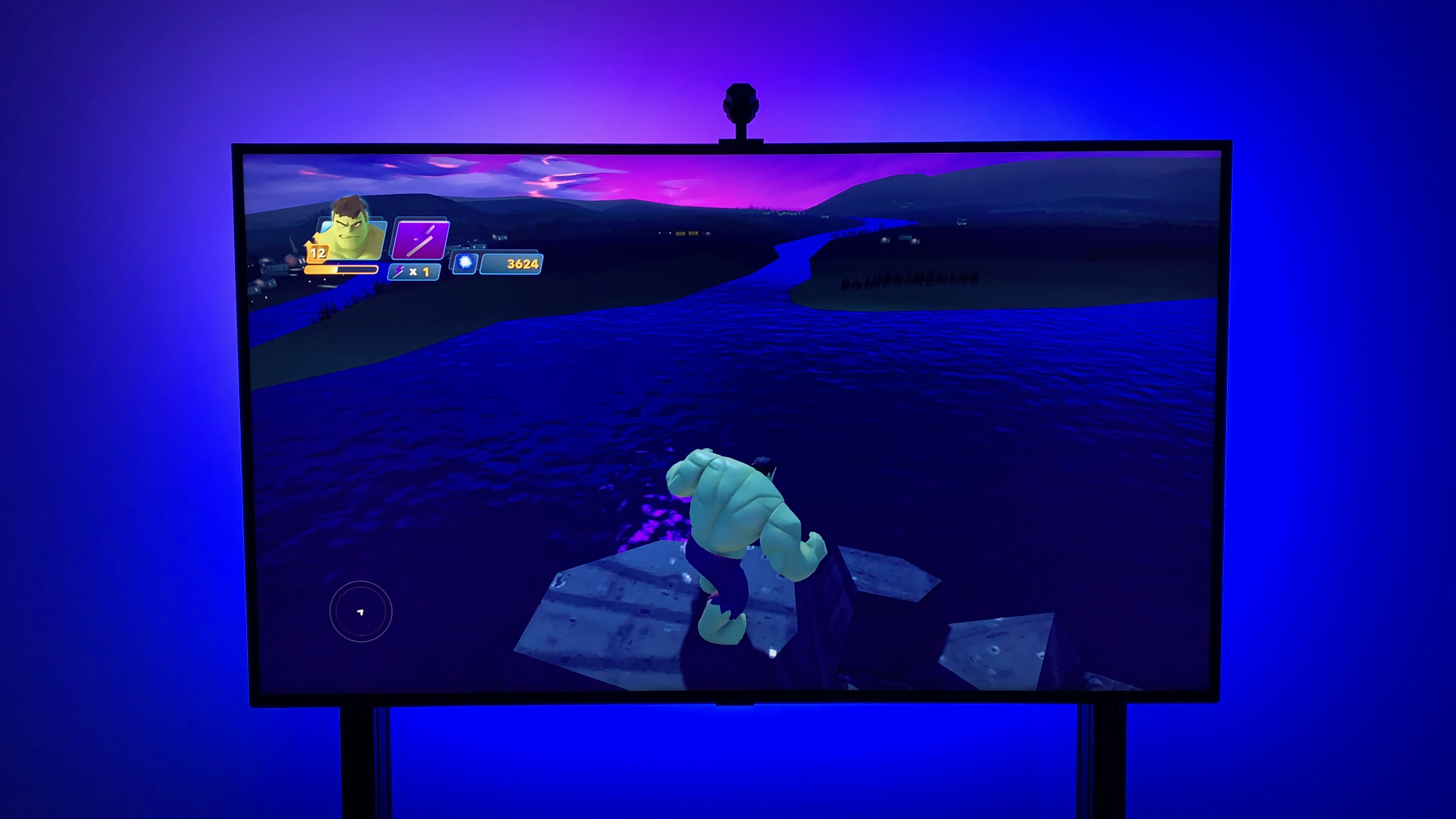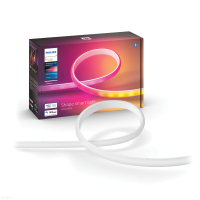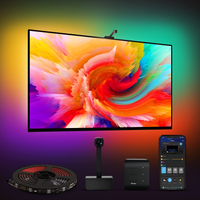TechRadar Verdict
The Nanoleaf 4D screen mirror and lightstrip kit surrounds your television or gaming monitor with color, and not just any old color at that; it can synchronize the colors to whatever is being displayed on the screen thanks to a camera that can be mounted above or below the screen. It’s a very effective, more affordable alternative to HDMI sync boxes like the Phillips Hue system.
Pros
- +
Bright, vibrant color displays with good reactiveness
- +
Works with Google Home, Apple Home, Alexa, Samsung SmartThings and Razer Chroma
- +
Fits televisions and monitors up to 85-inch.
- +
A cheaper alternative to the Phillips Hue system
Cons
- -
Camera needs re-calibrating whenever moved
- -
The camera system is susceptible to reflections on the screen
- -
Does not work with 5Ghz Wi-Fi
- -
Not Matter enabled
Why you can trust TechRadar
Two-minute review
Nanoleaf’s 4D TV-syncing strip lights are a first for the brand, which is known best for making some of the best smart lights available. With Nanoleaf 4D, the brand has easily accomplished one of the best Ambilight alternatives and created some serious competition for established brands in the space such as Philips Hue and Govee.
The set is available in two sizes, one for screens up to 65 inches and the other for models up to 85 inches, and come in at a fairly affordable price of $99 / £89 / AU$189 and $119 / £119 / AU$229 respectively.
Out of the box, the Nanoleaf 4D kit consists of an LED light strip that is attached to the back of the screen and plugged into a control box, which in turn connects to a camera that detects the colors displayed on the screen. The kit illuminates the LEDs to match the picture on your screen, throwing the colors onto the wall behind the screen for a pleasing synchronized glow around the screen.
The camera can either be mounted atop the TV with the included armature, or placed on your TV table using its built-in stand, and those concerned about prying digital eyes around their home will be pleased to learn that the camera also comes with a magnetic privacy cover.
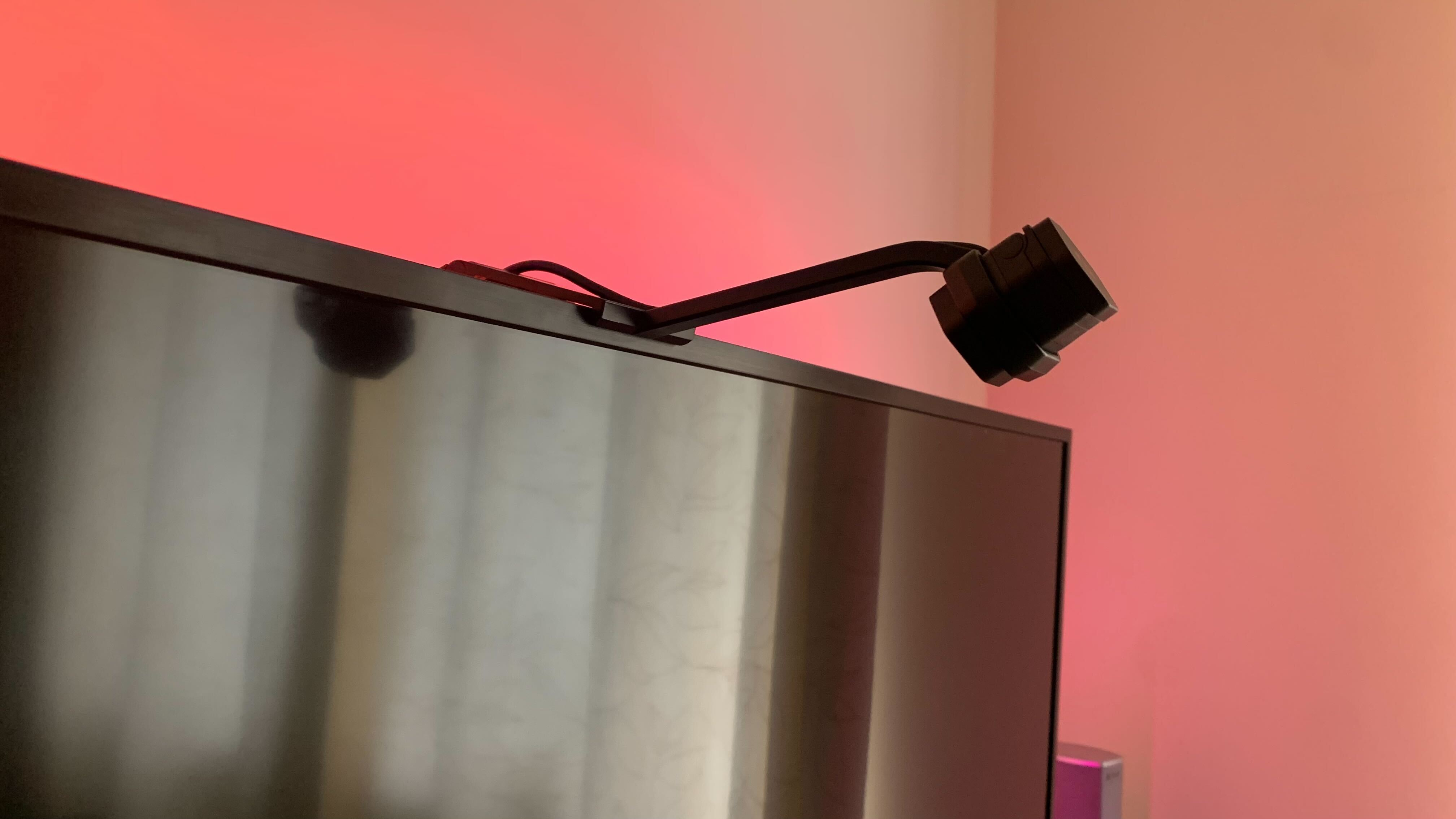
One of the slight niggles I found when setting up the lights concerned how the cables that connect the lights and camera to the controls are positioned. The rather vague instructions in the handbook encourage you to begin your light strip placement in the bottom right-hand corner of your screen, meaning the wire for the lights trails from that corner, while the camera cable falls centrally.
This leaves you with a choice of either bending and sticking the light strip wire or having the control sit somewhere near the right-hand side of your screen, lest you run out of wire length to play with. All in all, although not a major issue, I value a neat home entertainment setup and this doesn’t necessarily facilitate that.
Installation is otherwise very straightforward, although you will need to remove your television from the wall to fit the lightstrip, and potentially need a second pair of hands if you’re a real perfectionist. I cheated as my test screen is on a stand! The kit comes supplied with corner mounting blocks which allow the strip to curve around the corners (rather than creating a loop out of the strip which would create problems in accurately matching the colours to the screen.)
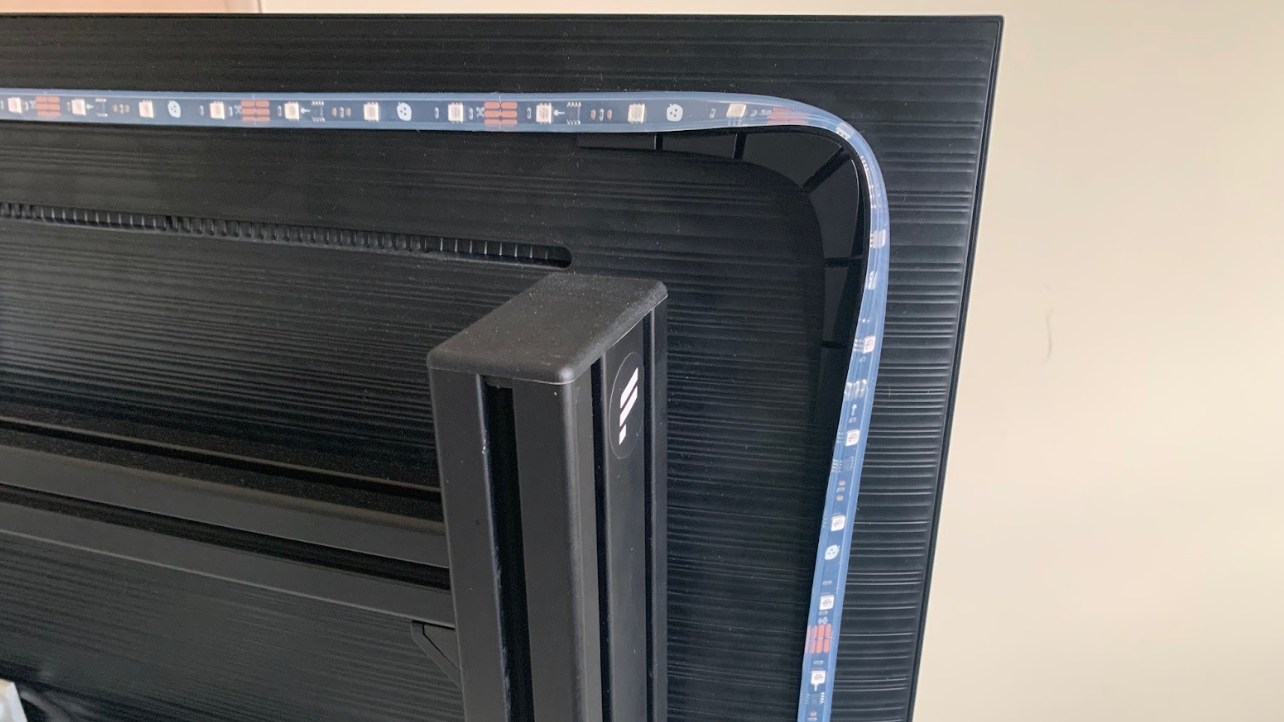
There are 10 color zones per meter and 30 LEDs per meter, and the strip can be cut to length at specific 10-centimetre intervals. This does mean you might end up with a gap or excess of the strip when they meet at the end, but a little trial and error with placement before sticking anything on will minimize this.
Once that’s done, simply peel off the tape backing and stick that strip down, and you’re all set. The strip does tend to peel away from the back of the screen where the two ends meet, but that’s easily resolved by applying some more double-sided sticky tape.
The Nanoleaf app is nicely laid out and works well most of the time, but can occasionally crash. Whilst I appreciate that all software has bugs, some sort of an error message would be nice. Having said that, the things that you can do with this software and the kit impressed me; the Nanoleaf 4D does all of the usual colored lighting tricks that LED strips do. But let’s face it, screen synchronization is what we’re here for.
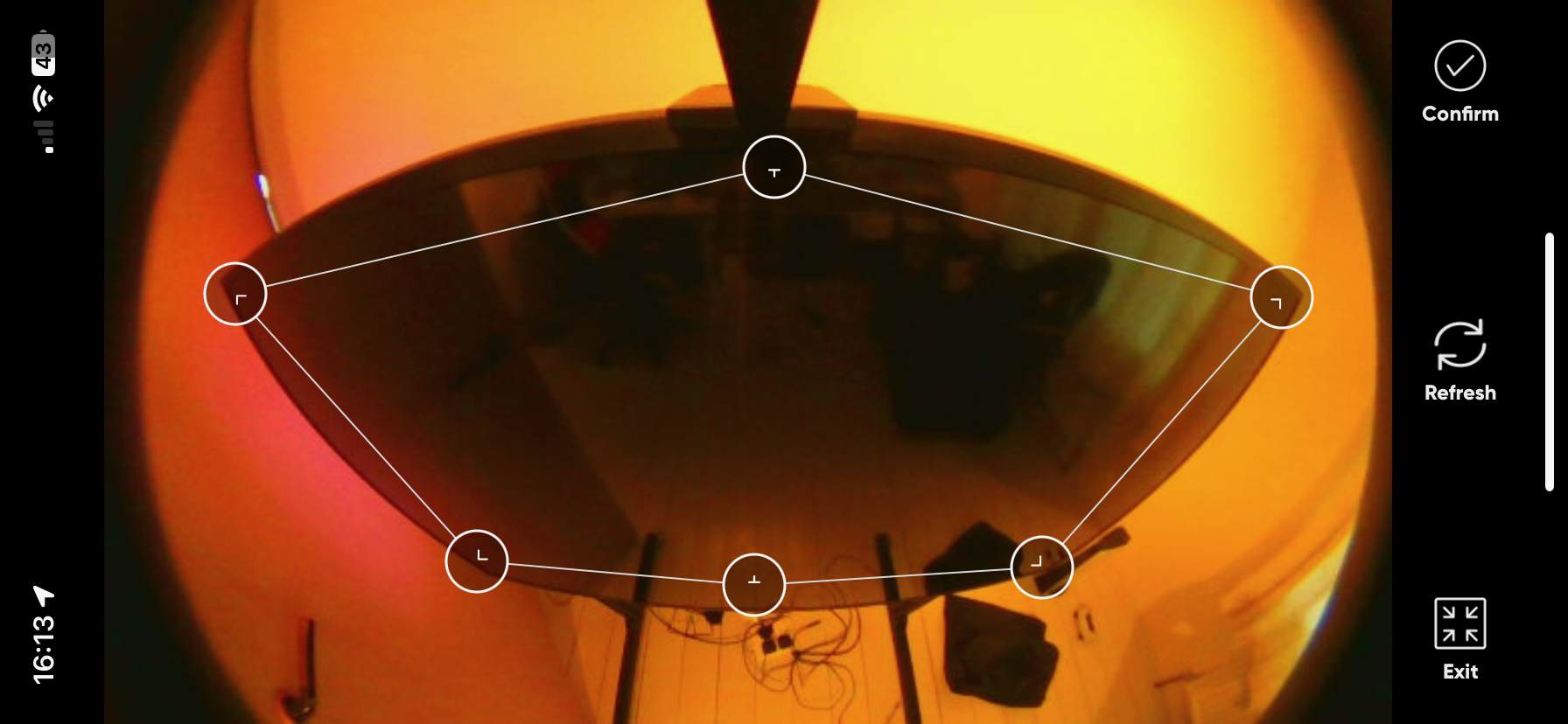
The app guides you through mapping out your TV lights, and once you’re set up, you can create your own scenes, or you can use the Magic Scenes feature to create a palette based on a mood or keywords (although I found that the latter favored washed-out hues).
You can choose between four settings (or dimensions, between 1D and 4D), which range from an ambient white glow to the aforementioned screen-matching lights akin to the gold standard Ambilight-style experience. It’s a little tricky to find clear guidance on what each of the dimensions does, so here is my take on it.
1D: White light that’s well suited to documentaries and general viewing
2D: Block color that’s great for ambiance, representing an average of the color displayed on-screen
3D: Splashes of color reflective of on-screen action, but not extending the screen
4D: Colors extend from the edges of the screen for full immersion
You can change the color settings by cycling through the controls or via the app.
Nanoleaf 4D features the same sound-reactive functionality boasted by its smart light siblings, and as a bonus, responds to sound far better than the Nanoleaf Smart Holiday String Lights I reviewed last month.
Once I had finished playing with all of the settings I played a few games and films and noticed that one side of the screen was not displaying the screen colors correctly. Further investigation revealed the problem; I needed to close a white door that was being reflected on the screen. You have a choice: either be mindful of the lighting and reflective objects in the room or spend between 4 or 5 times as much on a Philips Hue system for its HDMI linking.
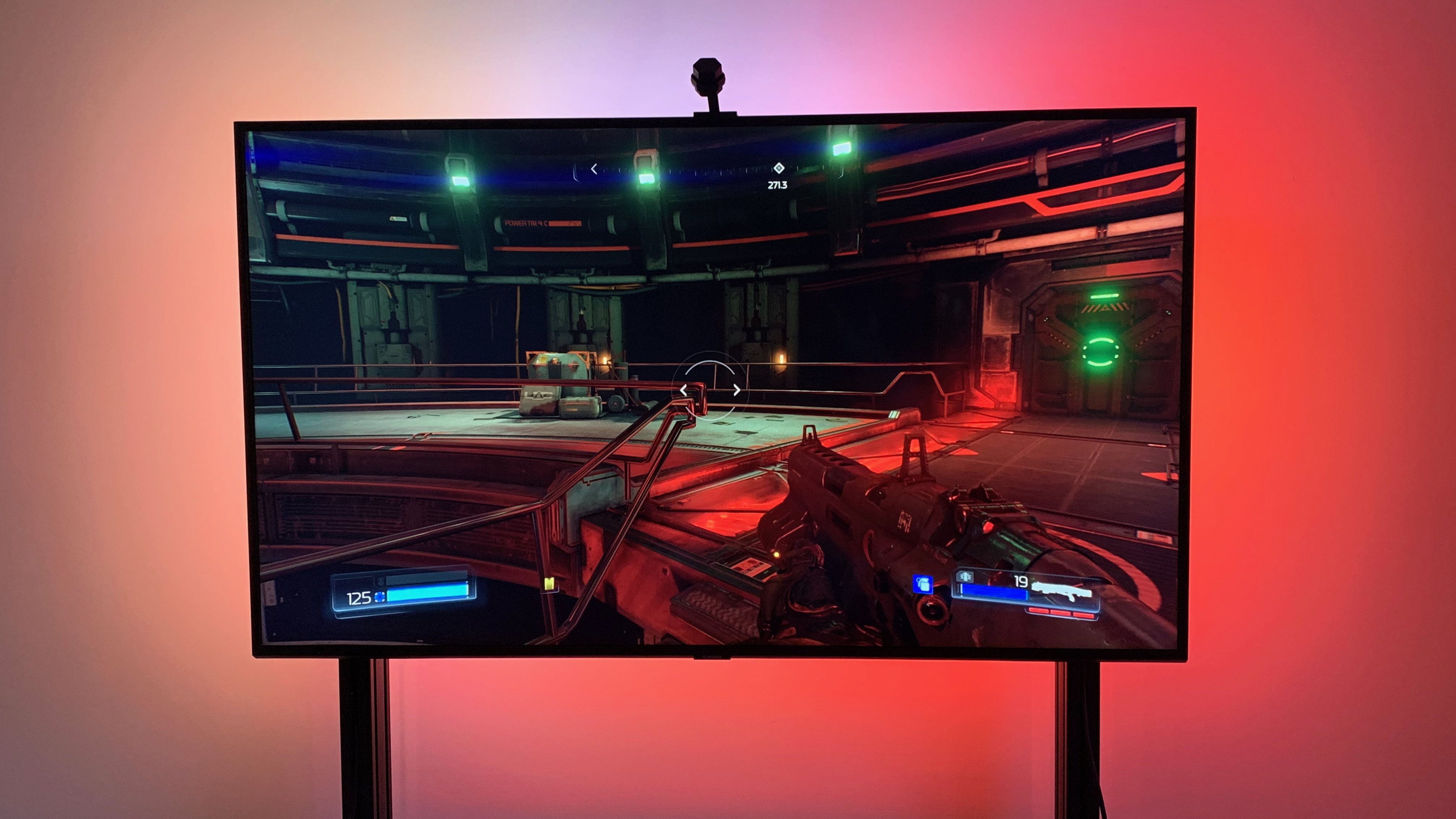
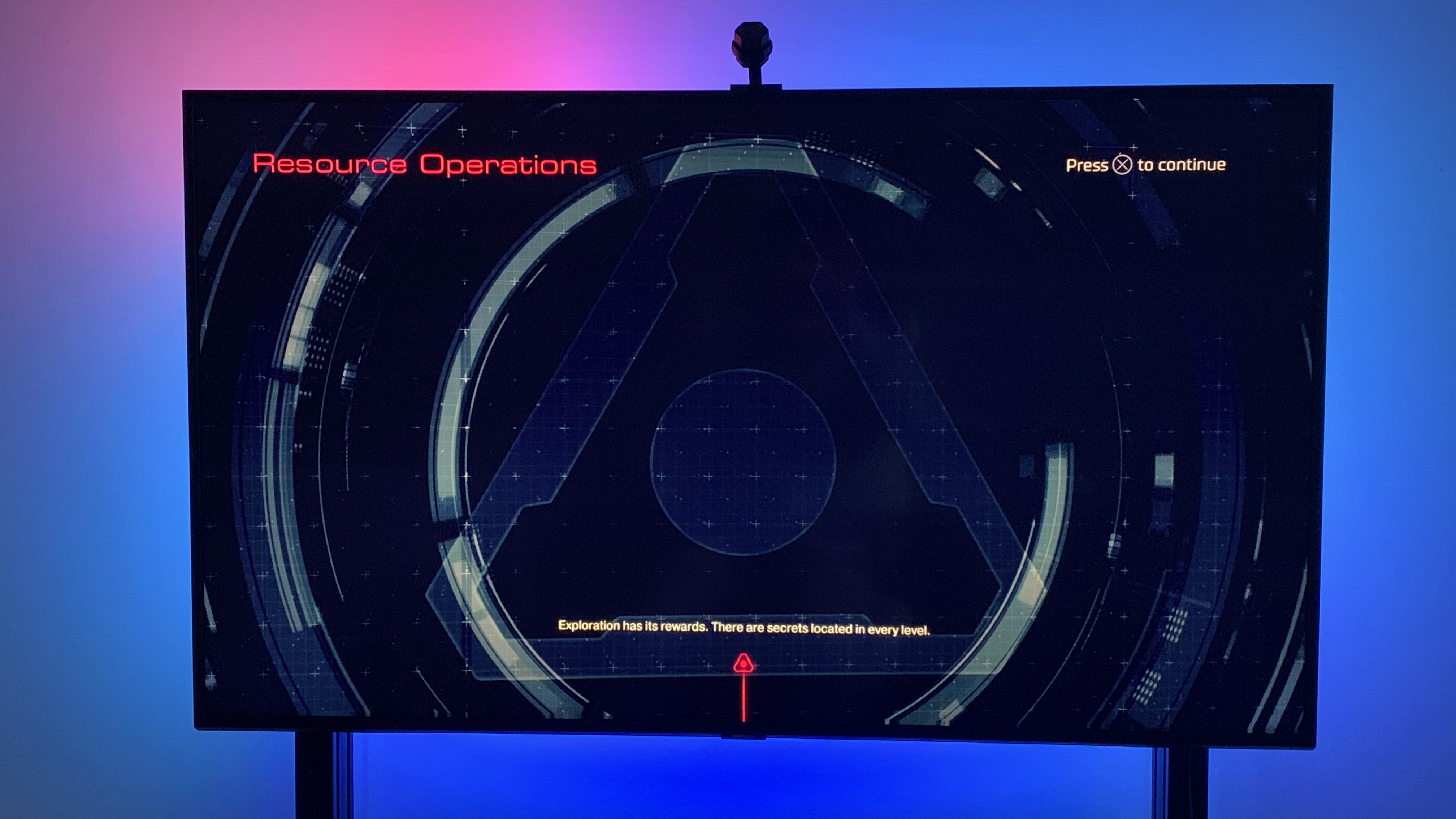
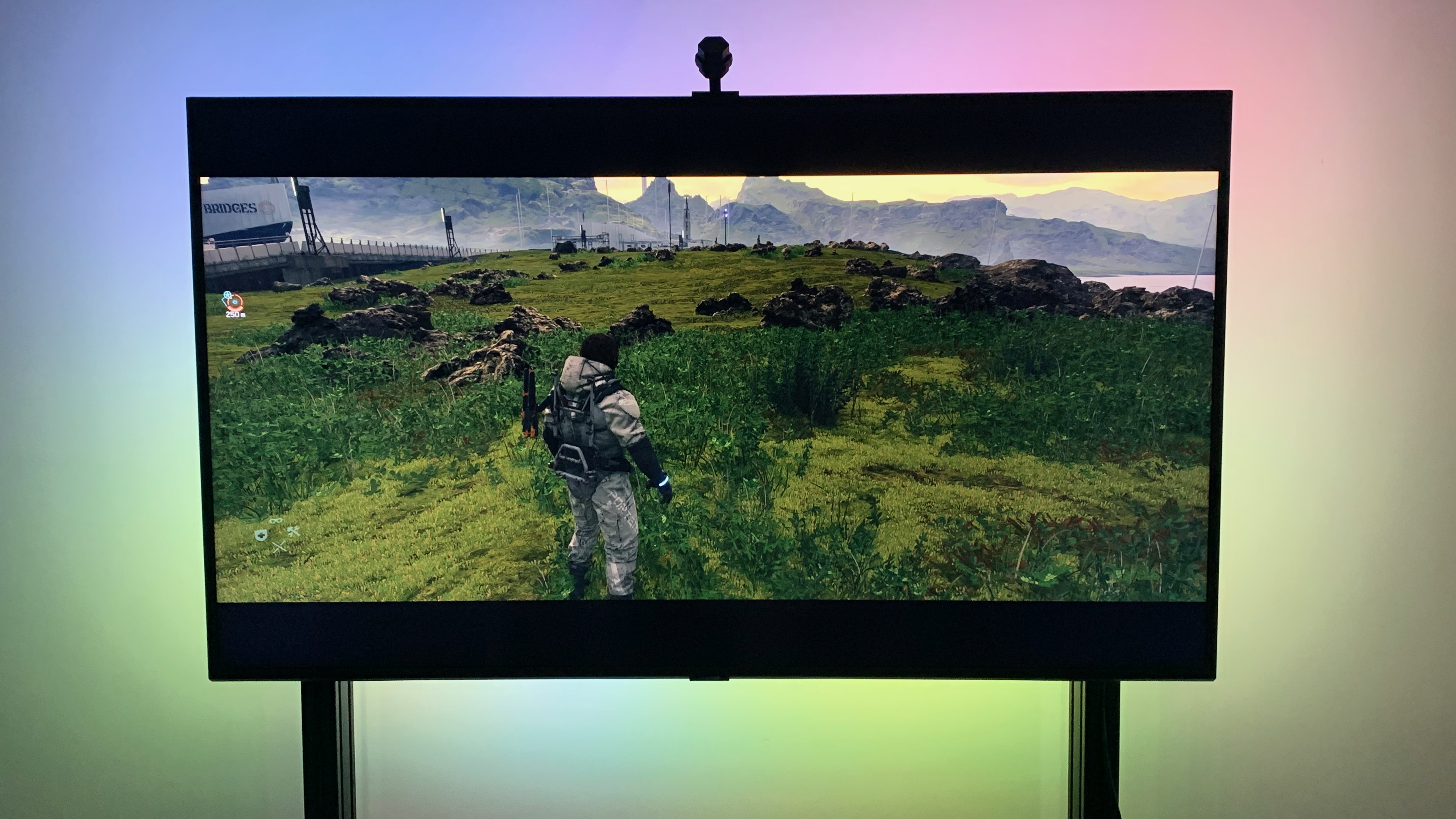
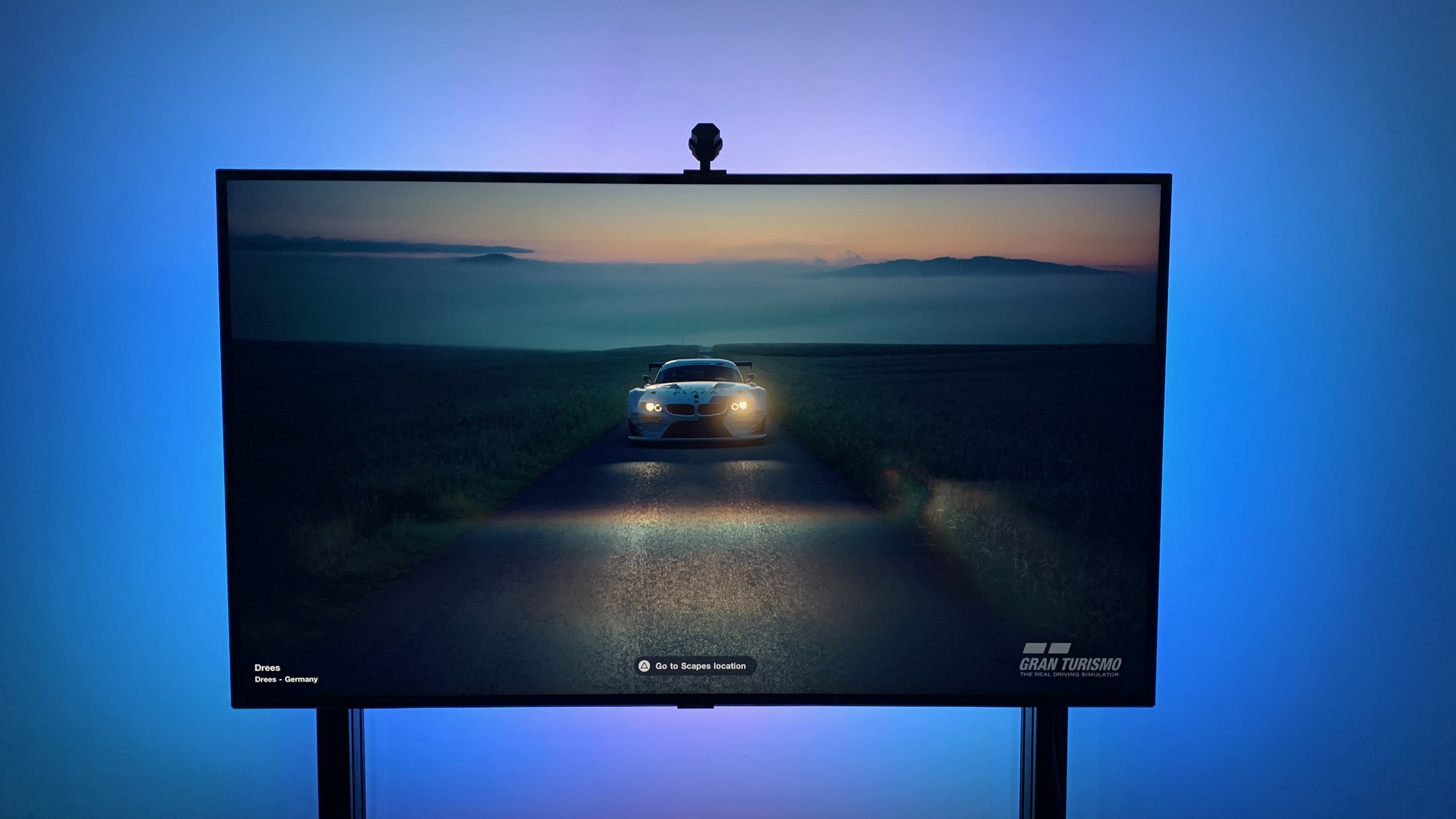
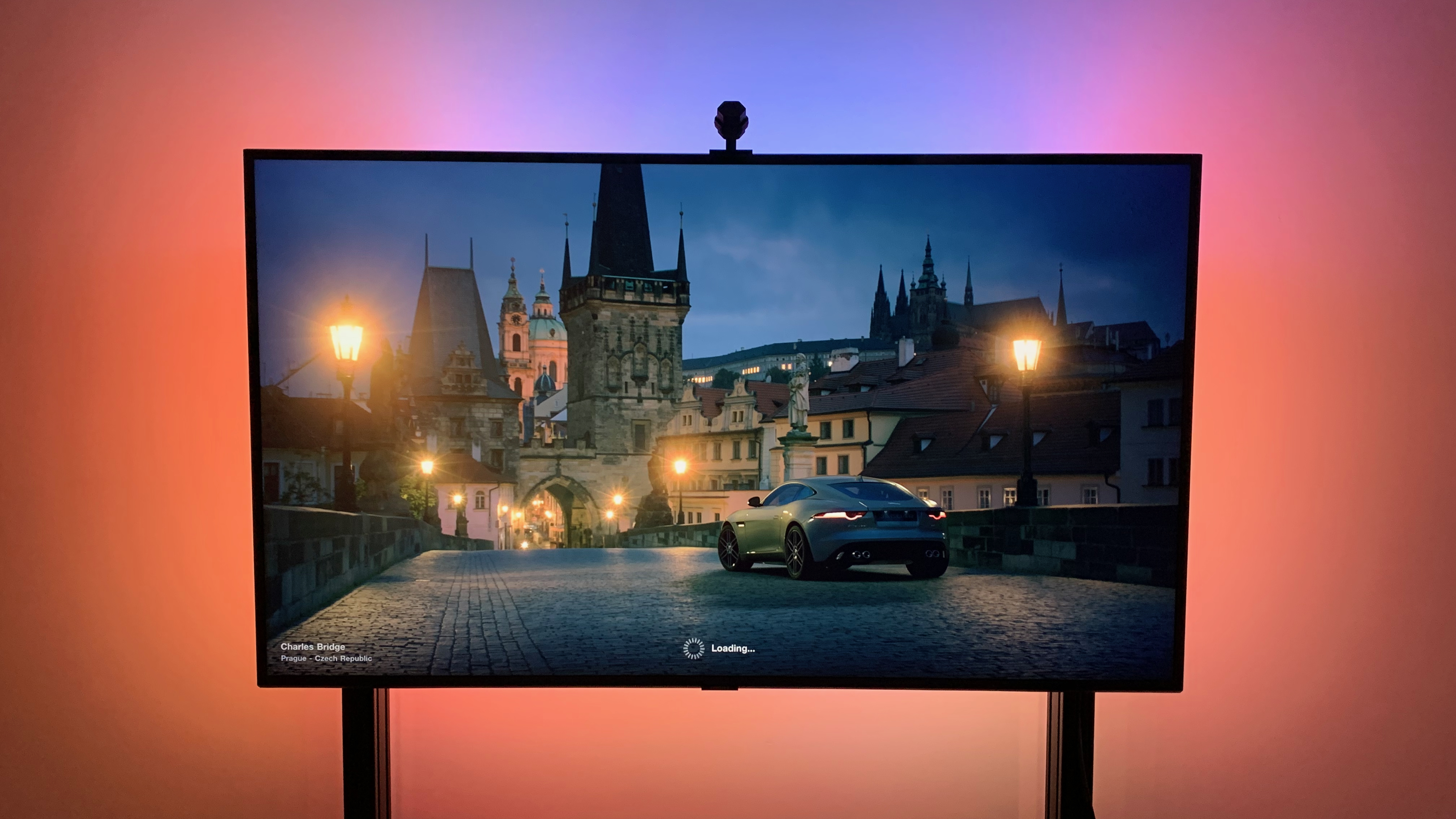
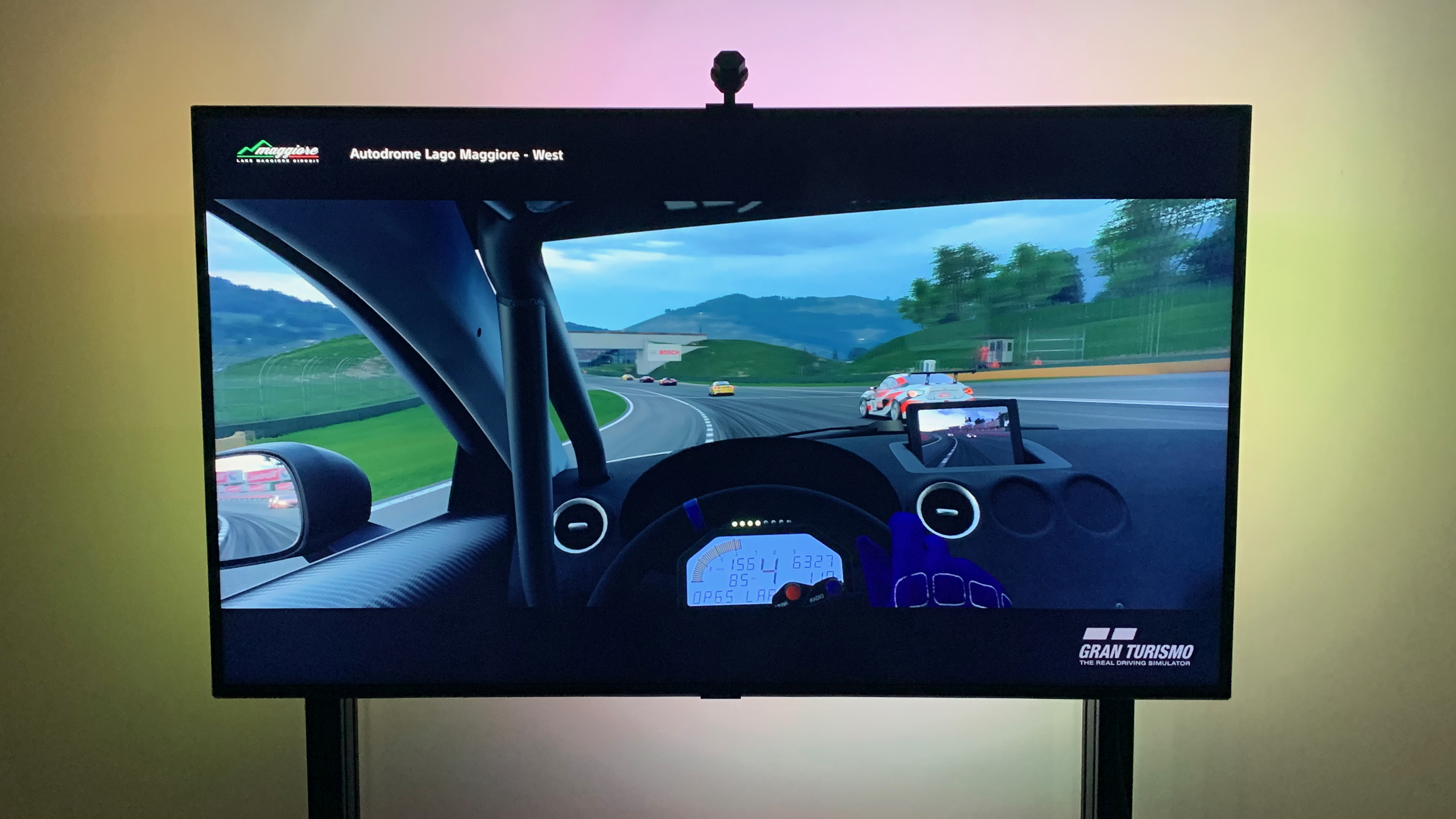
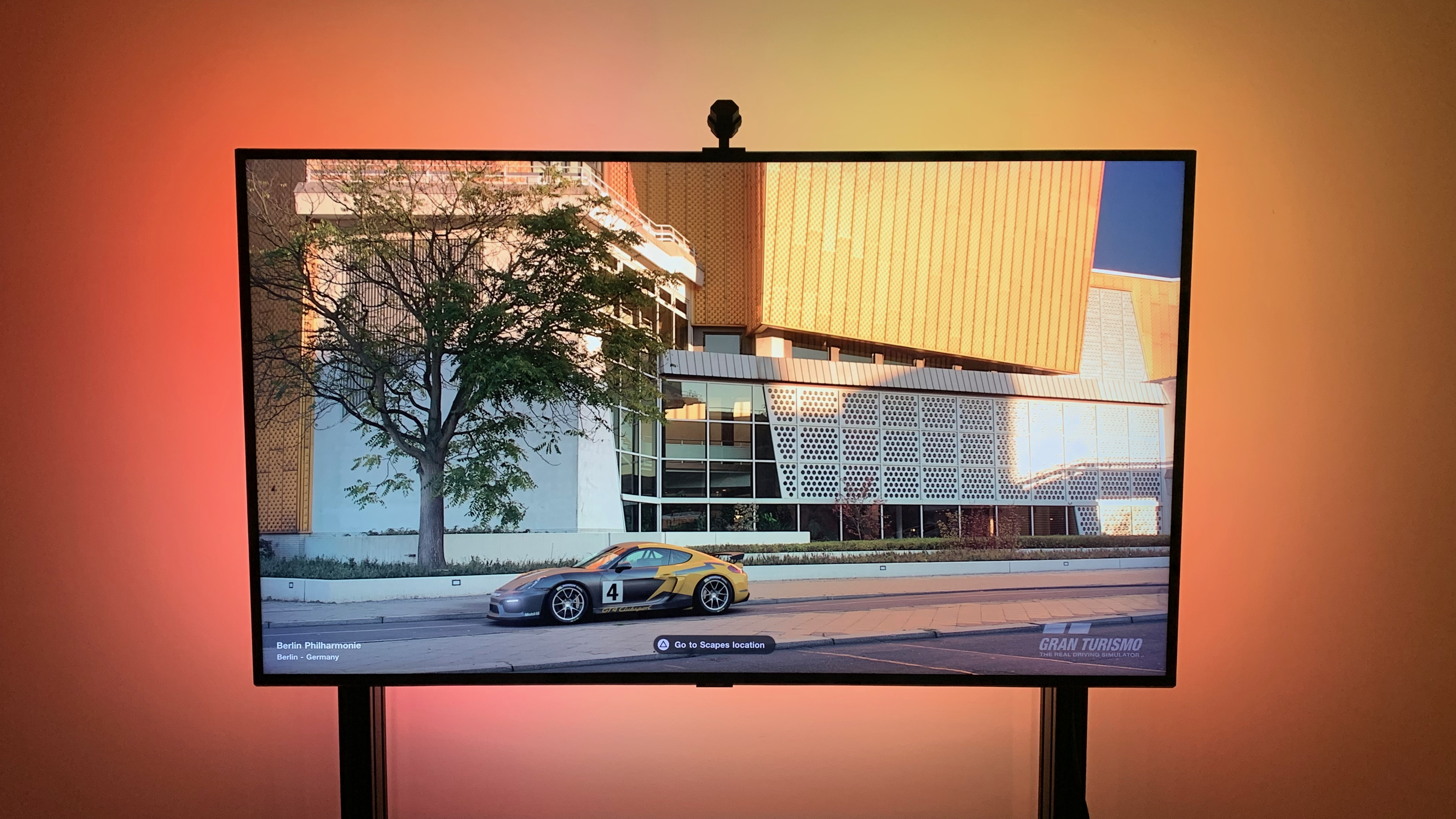
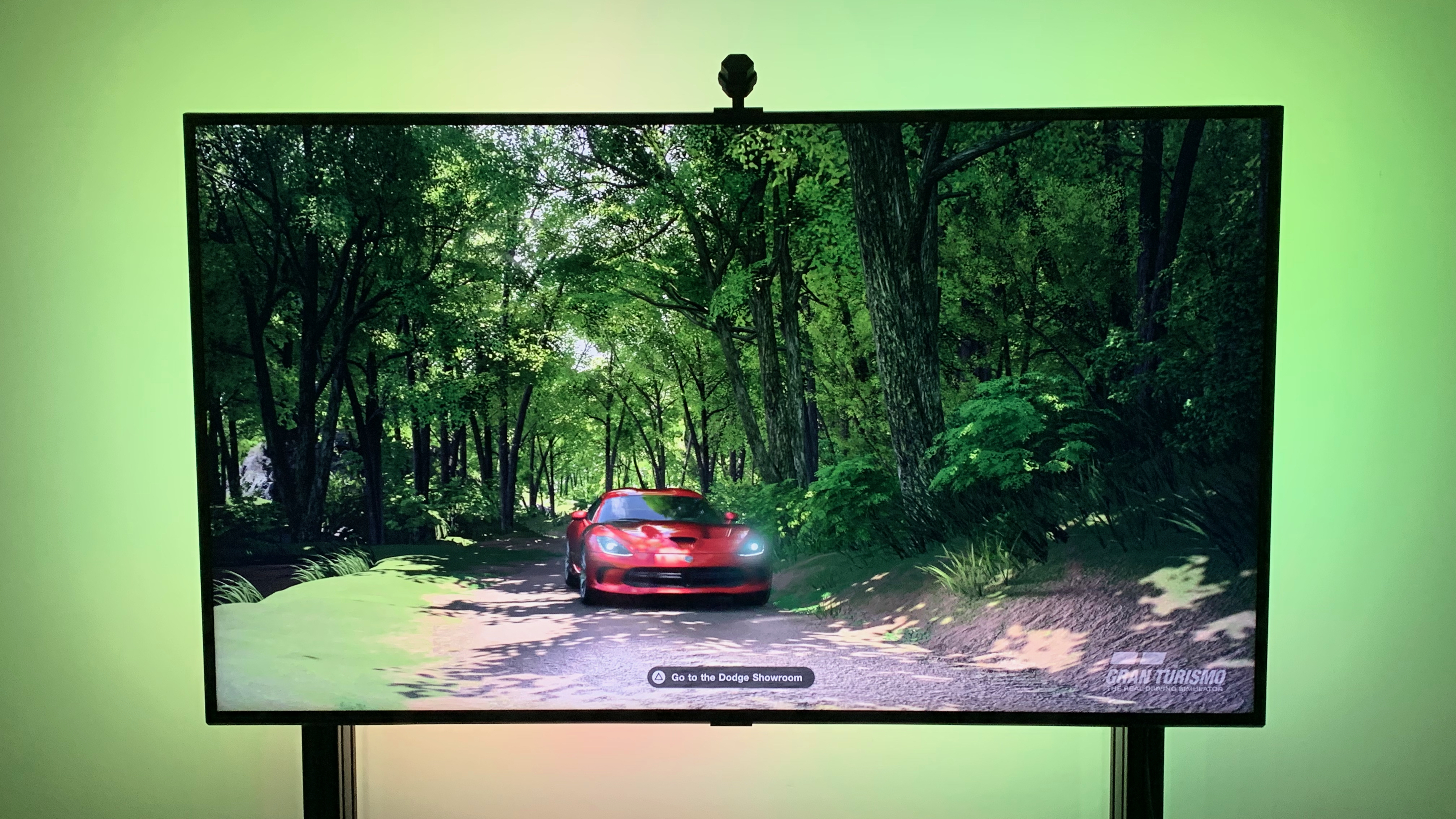
The only feature I found myself missing is a perennial issue for non-HDMI smart screen lights – automatic screen detection. Call me lazy, but I’d prefer my lights to come on when they detect on-screen activity, rather than requiring me to use the app or physical control.
Overall, I’d say the Nanoleaf 4D screen mirror and lightstrip kit is a great low-cost alternative to the Philips Hue system that just edges out the other low-cost alternatives in several areas; it’s easy to install, well-designed and the results can be spectacular. This thing is so versatile and colorful that it made me want to get some Nanoleaf wall tiles to test their claim of the 4D’s ability to “extend the screen sync effects across 50+ Nanoleaf RGB lights”. Look, somebody’s got to do it…
Nanoleaf 4D screen mirror and lightstrip kit: price and availability
List price:
- TVs & monitors up to 65-inch: $99 / £89.99 / AU$189.99
- TVs & monitors up to 85-inch: $119 / £119.99 / AU$229.99
- Camera only kit: $79.99 / £69.99 / AU$149.99
The Nanoleaf 4D screen mirror and lightstrip Kit are available directly from the Nanoleaf website, starting at $79.99 / $69.99 / AU$149.99 for the camera-only kit. You can also buy the camera-only kit from Amazon in the UK but curiously, not the full kit - however in the US, you can buy all three packages on Amazon.
The camera-only kit is a great cost-effective option which can be used with the Nanoleaf RGB LED light strip or any RGB light strip that has USB-C connection.
Value-wise, the Nanoleaf 4D is undoubtedly one of the best, if not the best value smart TV lights - the Philips Hue alternative for 75-inch and over TVs is nearly $100 / £100 / AU$300 more expensive at $249.99 / £209.99 / AU$509.95, and you'll need a Philips Hu bridge if you don't already have one. Govee's lights sit squarely in between but don't offer such consistency or smooth light performance as Nanoleaf.
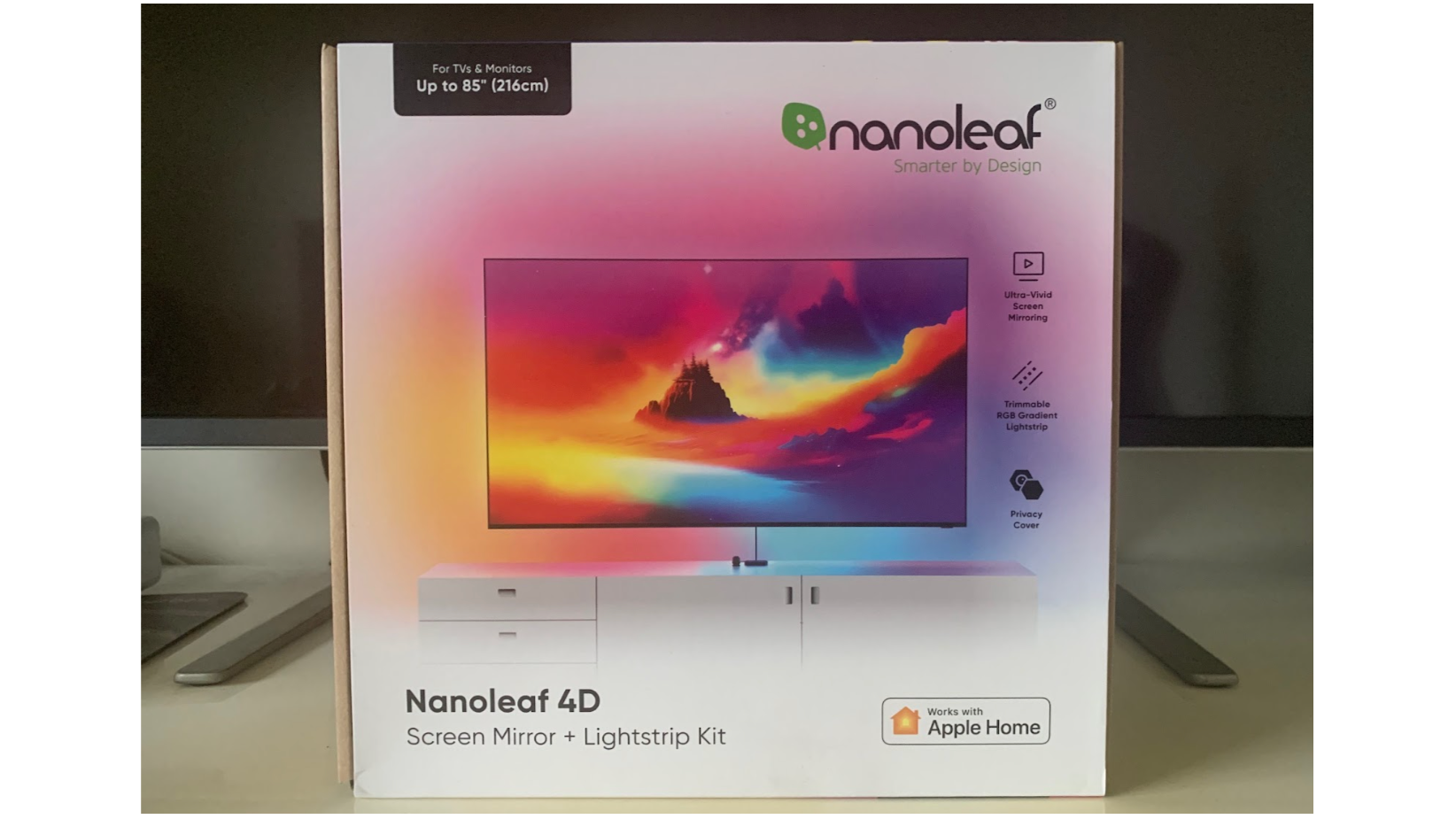
Nanoleaf 4D screen mirror and lightstrip kit review: Specs
| Colours | 16 million |
| Hub required | No |
| Smart home compatibility | Google Home, Amazon Alexa, Apple HomeKit |
| Connectivity | Wi-Fi (2.4 GHz b/g/n) |
| Mobile compatibility | iOS, Android |
| Screen size | Up to 85-inch |
| LED strip | addressable gradient, 30 LEDs/metre, 10 zones/metre |
Nanoleaf 4D screen mirror and lightstrip kit: Should I buy?
Buy it if...
You have a smart TV and want to use the light effect with the built-in apps (Netflix, Amazon Prime etc)
The Philips Hue HDMI synchronization box is very good but the apps on your smart TV do not pass through it; you’d need Philips Hue’s exorbitantly priced app for that.
You already have other Nanoleaf products
The screen synchronization can be extended to your other Nanoleaf products such as the Nanoleaf shapes and Lines products.
You’re on a budget
The Nanoleaf 4D screen mirror and lightstrip kit is a less expensive and less complicated alternative to the Philips offering but there are cheaper Bluetooth alternatives available like the Govee.
Don't buy it if...
Matter and Thread matter
The Nanoleaf 4D screen mirror and lightstrip Kit does not use either Matter or the Thread protocol. I guess (and it is a guess) that Thread is out of the question as there is a need to access the kit’s camera during setup which would swamp the Thread network. As it falls in that awkward space between smart lights and TV accessories, it’s not exactly a Matter priority, either.
Your room has lots of interfering reflections
Reflections on the screen are a problem for the Nanoleaf 4D, so if, like me, you have a lot of light colors in the room (even my floor is white) the colors that the camera will detect are affected. This can be mitigated with the software but it is a drawback with camera-based systems.
You find ambient lighting around screens distracting
How did you make it this far into the review? Either way, the lights can be quite splashy, and won’t be for everyone.
Also consider
| Header Cell - Column 0 | Nanoleaf 4D | Govee Immersion smart TV lights | Phillips Hue Play gradient lightstrip |
|---|---|---|---|
| Price | Up to 65-inch: $99 / £89.99 / AU$189.99, up to 85-inch: $119 / £119 / AU$229.99, camera-only kit: $79.99 / £69.99 / AU$149.99 | 55- to 65-inch: $149.99 / £149.99, 75- to 85-: $169.99 / £169.99, 98- to 100-inch: $199.99 | 55-inch: $249.99 / £169.99 / AU$409.95, 65-inch: $269.99 / £189.99 / AU$444.95, 75-inch $299.99 / £209.99 / AU$509.95. Required Philips Hue Bridge: $59.99 / £49.99 / AU$99.95 |
| Lifetime | 25,000 hours | 50,000 hours | 25,000 hours |
| Connectivity | 2.4GHz Wi-Fi | Bluetooth | Hue Bridge and Hue Sync Box |
| Control | Control via the Nanoleaf App (Android & iOS) for mobile/tablet or the Nanoleaf Desktop App (Windows & Mac). | Bluetooth, Smart App | Hue Sync Box |
| Compatibility | Apple Home, Amazon Alexa, Google Home, IFTTT, SmartThings, Razer Chroma | Alexa, Google Home | Alexa, Google Assistant and Apple HomeKit |
| Colors | 16+ million | Unknown | 16+ million |
Philips Hue Play gradient light strip
As the leader of the pack in smart lighting, it’s no surprise that Philips Hue’s light strip is our gold standard for TV smart lights. Plus, these lights connect via HDMI, meaning they automatically wake with the TV without the need for a camera. It is pricey, but will accurately synchronize the colors on the screen with little-to-no delay thanks to the HDMI connection. You can buy the Philips kit either from Philips-hue.com or their Amazon store. There are caveats though, like this HDMI 2.1 issue for PS5 players, so it's worth researching further.
Govee Immersion smart TV lights
Another set of budget-friendly lights, while these feel a little less premium, they work well have a great lifespan, and are a good alternative if you already have a lot of Govee devices. However, this kit comes supplied with 4 lengths of LED strip rather than one continuous strip which means the colors at the corners are not as good. It isn’t Apple Homekit compatible at the moment unless you use Homebridge and I feel that Bluetooth is a limitation. On the plus side, Matter support is coming soon which could address these shortcomings. Promises, promises.
Read our full Govee Immersion smart TV lights review.
Nanoleaf 4D screen mirror and lightstrip kit review: How I tested
- I installed the Nanoleaf application and added the Nanoleaf 4D screen mirror and lightstrip Kit to Apple HomeKit
- I tested all of the modes and scenes against different types of content (i.e. films, TV programs, Games) and resolutions
- I tested each claimed feature e.g. “Reacts to music” where possible
- I tested the kit under various lighting conditions.
I had already tested a pre-release version of this kit last year which was unfortunately defective and a very frustrating experience. The days that I spent trying to get it to work reliably were not wasted though as it gave me a good understanding of how the thing works and how it has been improved.
I was pleased to be able to make use of scenes in Apple Homekit which I could not get to work when I tested the Nanoleaf Smart Holiday String Lights last month. I switched off Bluetooth on my phone and ran all of the tests again to find out if there was any function that used Bluetooth and everything behaved normally.
The room I use to test things is the worst-case scenario for the Nanoleaf 4D screen mirror and lightstrip Kit as it is almost completely white. Everything gets reflected on the screen, especially in daylight which affects the colors that the camera detects. I was pleasantly surprised during testing to find that some of the reflection problems could be dialed out using a custom vibrancy set which allows you to change the values for Dynamic range, saturation, and white balance.
For 20 years, Les has worked in and around software development, meaning he's a pretty dab hand with a computer. Beyond that, he's known as "Gadget-man" to his friends, constantly in search of the latest and greatest tech to geek out over. In his spare time, you'll find Les in his man cave, also known as "the Lab", whether he's trying out 3D modeling and printing, gaming, practicing software development, or playing with electronics. He's a huge F1 fan, a lover of all things Star Wars and DC, and an avid LEGO builder.
